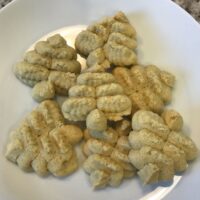A Lotta Latte
(The following article was written for and published in the November 2021 issue of Get Healthy magazine, a publication of The Northwest Indiana Times.)
I was introduced to coffee at about the age of 4. My parents and I were visiting family in southern Indiana. Having gotten up quite early one morning, I went straight to the kitchen. My Uncle Lowell poured me a cup of coffee—black—and we proceeded to have conversation, mostly about how my mother would have a fit if she caught me drinking coffee. I doubt I really liked the taste. What I really liked was that I was getting away with being very adult. This was back in the day when the only options for flavoring coffee were with the addition of cream and/or sugar. Specialty coffee drinks now available in coffee and donut shops, drive-thru restaurants, as well as up-scale eateries, have added a new dimension to the coffee menu of old. Today’s numerous specialty coffees, as well as their lengthy names, may even be a bit intimidating to those of us who brew and drink our coffee at home.
Coffee drinkers have noted some health benefits such as increased energy (due to the caffeine), improved mood and physical performance. Coffee contains a high amount of disease-fighting antioxidants and may contribute to lowered risk of type 2 diabetes, dementia, Parkinson’s disease, Alzheimer’s, liver and colorectal cancers, as well as increased longevity. If you’re not a coffee drinker, not to worry, as there are numerous foods that offer similar benefits.
During this holiday season there may be more occasions to stop by your favorite coffee shop for a boost of much-needed energy or to socialize over coffee with friends. I thought this month would be an appropriate time to bring you the following information. Keep in mind that I am merely the messenger and have been known to occasionally enjoy a fancy coffee.
One cup of black coffee contains a negligible number of calories, anywhere from zero to five. The calories and fat begin to add up as you mix in sugar, cream, syrups, and other ingredients. Depending on the extravagance of your coffee drink, which ends up containing very little coffee, you would come out ahead nutritionally and calorie-wise if you enjoyed a meal instead. It’s easy to discount beverages when it comes to considering our total food intake for a day. Drinker beware.
For example, one shop offers a frozen 20-ounce butter caramel flavored drink with whole milk. The nutritional breakdown: 880 calories, 11 grams fat (7 saturated), 184 grams carbohydrates (175 grams are sugar), 11 grams protein. Surprisingly, you could have a bacon egg and cheese on a croissant, and a chocolate-frosted donut with sprinkles—and you’d come in at only 830 calories. This drink contains nearly 3 cups of cream and sweetened condensed milk. According to the American Heart Association, men should consume no more than 36 grams (9 teaspoons) of added sugar in a day. Women should consume no more than 25 grams (6 teaspoons).
Perhaps you very innocently order a small fancy coffee. After all, it’s small. Prepare for more shocking statistics. A small sugar cookie latte has 230 calories, 6 grams fat (3.5 saturated), and 35 grams sugar. Ingredients besides coffee include high-fructose corn syrup, four artificial colors, and “sugar cookie flavored swirl syrup.” Instead, you could have had a cup of coffee lightened with whole milk and a real sugar cookie for a mere 205 calories.
you could have had a cup of coffee lightened with whole milk and a real sugar cookie for a mere 205 calories.
Even a small café mocha packs a whopping 340 calories, 11 grams fat (7 saturated), and 42 grams sugar. A sugar overdose, more artificial ingredients, and let’s be honest—no real health benefits from this cup of “coffee.” However, by choosing a small café au lait made with whole milk and an ounce of 70% or more dark chocolate, you’re doing something better for your health. You still get the energy boost from the caffeine plus the enjoyment of eating chocolate. Dark chocolate, like coffee, contains antioxidants and your calorie intake is under 200 with this pairing.
There are numerous fancy “coffee” drinks that have the capability of sabotaging your healthy eating plan and causing some unwanted pounds to sneak up on you. Would you prefer to eat your treat calories in the form of a couple Christmas cookies or enjoy them in a “coffee?” Some of these drinks would best be categorized as desserts, but don’t tell the coffee shops I told you. I enjoy meeting friends at a specialty coffee shop now and then and imbibing in my favorite coffee drink. Of course, this is after I eat a salad.






 Slather them with nut butter or serve with your favorite cheeses.
Slather them with nut butter or serve with your favorite cheeses. 
